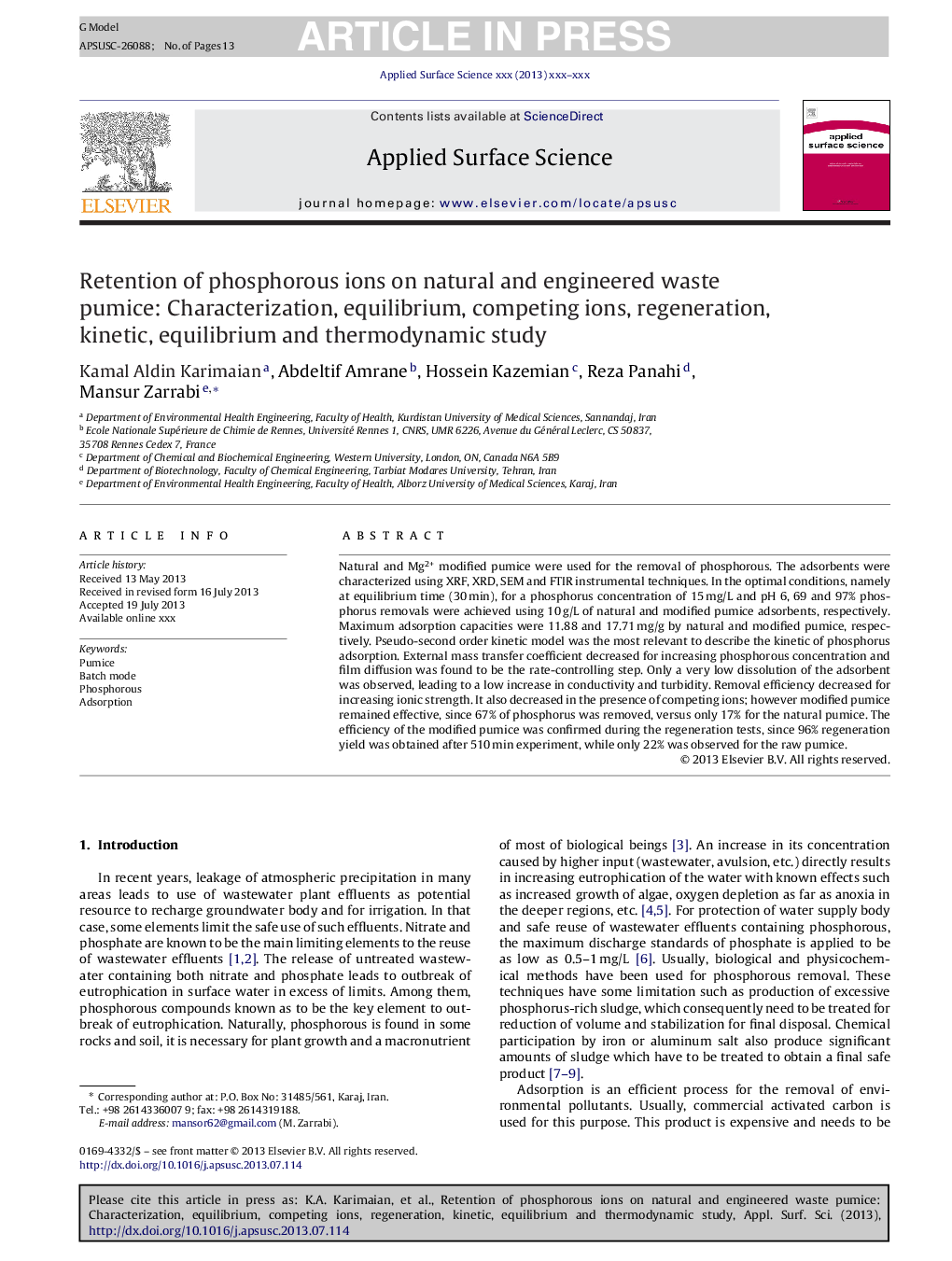| Article ID | Journal | Published Year | Pages | File Type |
|---|---|---|---|---|
| 5352625 | Applied Surface Science | 2013 | 13 Pages |
Abstract
Natural and Mg2+ modified pumice were used for the removal of phosphorous. The adsorbents were characterized using XRF, XRD, SEM and FTIR instrumental techniques. In the optimal conditions, namely at equilibrium time (30Â min), for a phosphorus concentration of 15Â mg/L and pH 6, 69 and 97% phosphorus removals were achieved using 10Â g/L of natural and modified pumice adsorbents, respectively. Maximum adsorption capacities were 11.88 and 17.71Â mg/g by natural and modified pumice, respectively. Pseudo-second order kinetic model was the most relevant to describe the kinetic of phosphorus adsorption. External mass transfer coefficient decreased for increasing phosphorous concentration and film diffusion was found to be the rate-controlling step. Only a very low dissolution of the adsorbent was observed, leading to a low increase in conductivity and turbidity. Removal efficiency decreased for increasing ionic strength. It also decreased in the presence of competing ions; however modified pumice remained effective, since 67% of phosphorus was removed, versus only 17% for the natural pumice. The efficiency of the modified pumice was confirmed during the regeneration tests, since 96% regeneration yield was obtained after 510Â min experiment, while only 22% was observed for the raw pumice.
Related Topics
Physical Sciences and Engineering
Chemistry
Physical and Theoretical Chemistry
Authors
Kamal Aldin Karimaian, Abdeltif Amrane, Hossein Kazemian, Reza Panahi, Mansur Zarrabi,
